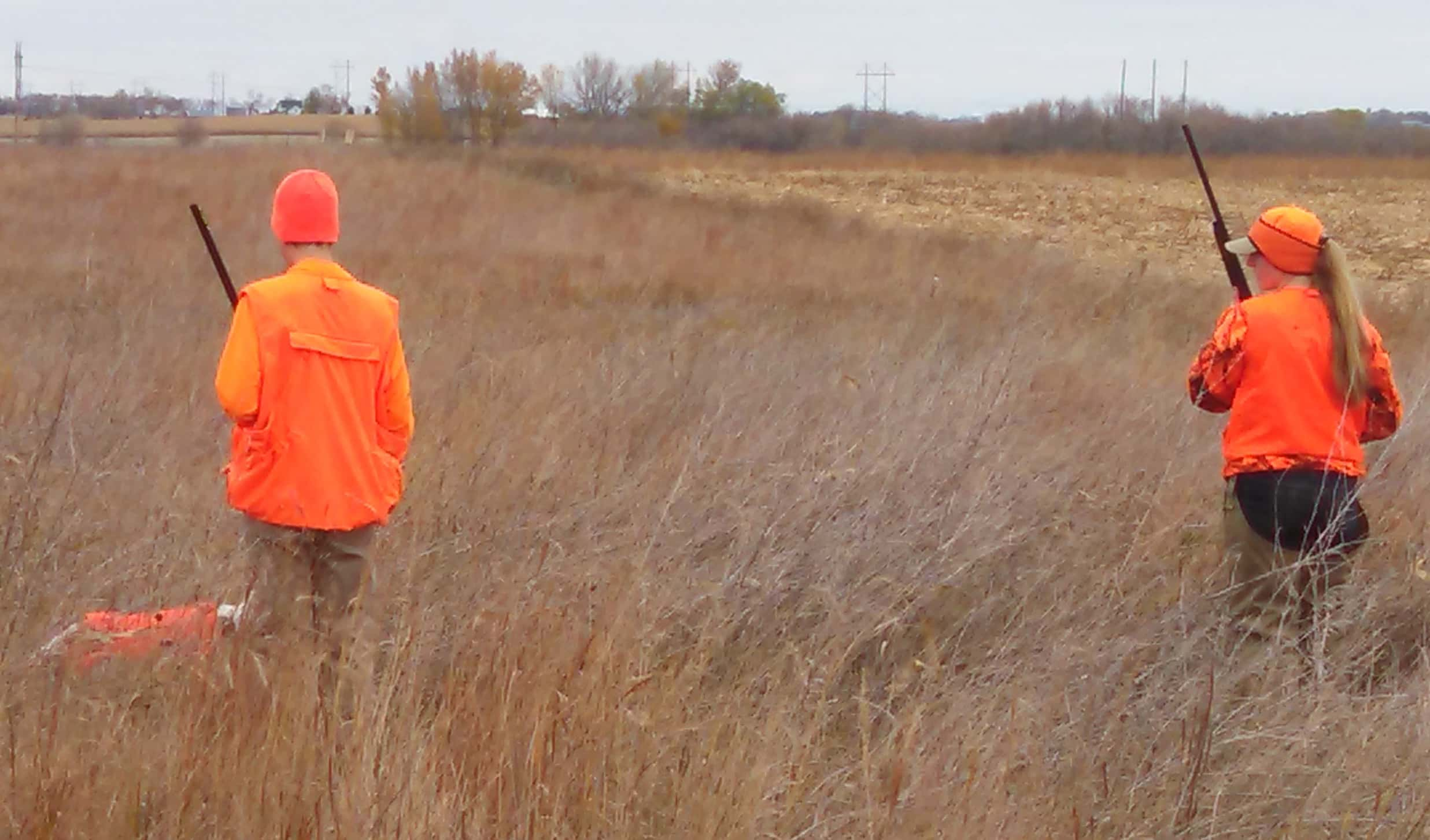
Before young hunters can enter the field, completing a hunter education course is a requirement. Luckily the ND G&F has adapted their program to answer modern hunting needs and the heightened demand for the classes throughout the Peace Garden State. Simonson Photo.
By Nick Simonson
While winter and spring aren’t often associated with hunting in the upper Midwest, the months of January through May are an important time in the lives of young hunters as the bulk of hunter education courses are offered to those looking to get licensed in time for next fall’s seasons.
With the help of hundreds of volunteer instructors throughout the state, agents of the North Dakota Game & Fish Department (NDG&F), like Hunter Education Supervisor John Mazur, look to provide participants not only with the basics, but also state-specific information on hunting activities and outdoors issues.
“We’re always evolving with the times, about 12 years ago a portion that we added was on conservation,” Mazur stated, “most recently we’ve partnered with the Sign Warriors program so what we’re trying to do is constantly evolve with the times and keep our program relevant with the issues that are going on out in the field,” he concluded, stressing the heightened role of sportsmen in the prevention and reporting of vandalism in relation to the new segment of the program.
The International Hunter Education Association provides a baseline curriculum which each state adheres to in order to maintain certification for its students, and the various agencies are able to modify that framework with their state-specific additions from year-to-year. In order to keep that information top-of-mind for the instructors and advise them of any changes, Mazur hosts eight workshops throughout North Dakota, bringing together the volunteers to update them for consistency in the classes held across the state.
Additionally, the NDG&F started a hunter education academy geared toward new instructors, but open to all volunteers, which provides an intensive three-day course laying out the basics for those who are new to the teaching process. In an effort to involve more families in hunter education and increase retention of hunters, the NDG&F now invites instructors as young as 14 years of age to help teach courses.
“You can become a youth instructor at the age of 14 and the idea behind that is to get more families involved in hunter ed,” Mazur related, “those kids can come into the classroom, we can get them started early, they can take part in the entire class; the only thing they can’t do is pass or fail a student,” adding that younger people taking the course relate well to having instructors nearer to their age and see their involvement as making hunting relevant and cool, helping with overall hunter retention in the challenging 16-to-25 year old age group.
The ND G&F offers a variety of courses to meet individuals’ schedules and demands on their time. The traditional classroom-based course is open to those participants who are older than or will turn 11 in the upcoming calendar year. There are also two online study programs, the first open to those 13 and up has two classroom nights with the balance conducted online, and the second open to participants age 16 and older, is completely online with one full range day where they are exposed to and tested on field safety situations.
Bow hunter education is also offered and is growing in popularity with the increasingly prevalent requirement in many states outside of North Dakota that hunters have accredited certification to get an archery license for big game. The program – done on its own or in conjunction with standard hunter education – also qualifies archery hunters for special hunts in North Dakota, such as in-town management seasons and those in special areas, such as the NDSU extension grounds in Bismarck.
Hunter education remains in high demand, though Mazur suggests that the panic when early classes fill up fast is often misplaced, as a number of subsequent courses are offered in metro areas around the state to help alleviate the rush to enroll. With some of that demand increasing as shooting sports offerings expand throughout the region, volunteer instructors – who are also often coaches for clay target league and other shooting sports teams – offer closed courses to those participants looking to meet the league requirement of hunter education certification prior to the season’s start.
Mazur encourages those parents looking to enroll their youth in a hunter education course in the coming years to subscribe to the NDG&F text and email alert system, so they can be made aware of courses opening up in their areas and enroll as soon as they are made available.
For more information on the North Dakota Hunter Education program, visit gf.nd.gov/education/hunter and click on the subscribe tab for regular updates on class availability.

